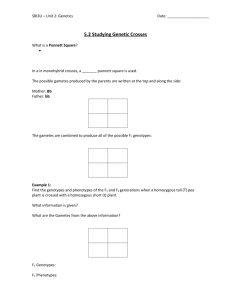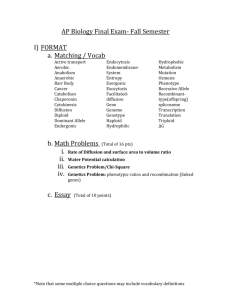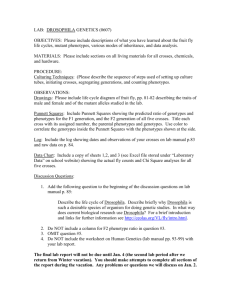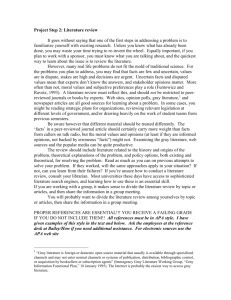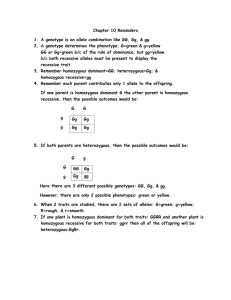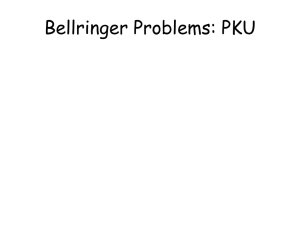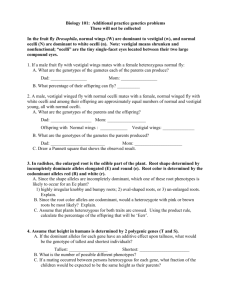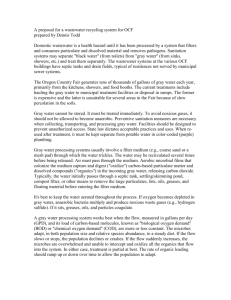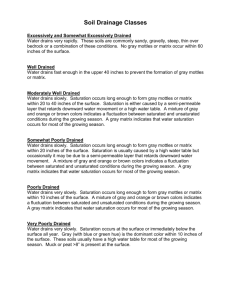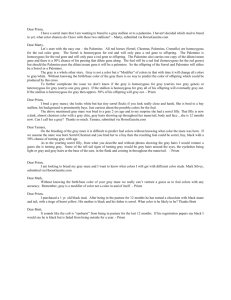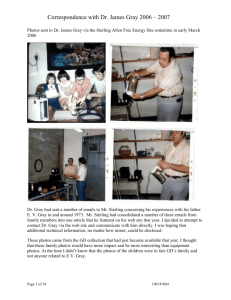AGRON/GEN 309 GENETICS PROBLEM THREE – Mendelian
advertisement
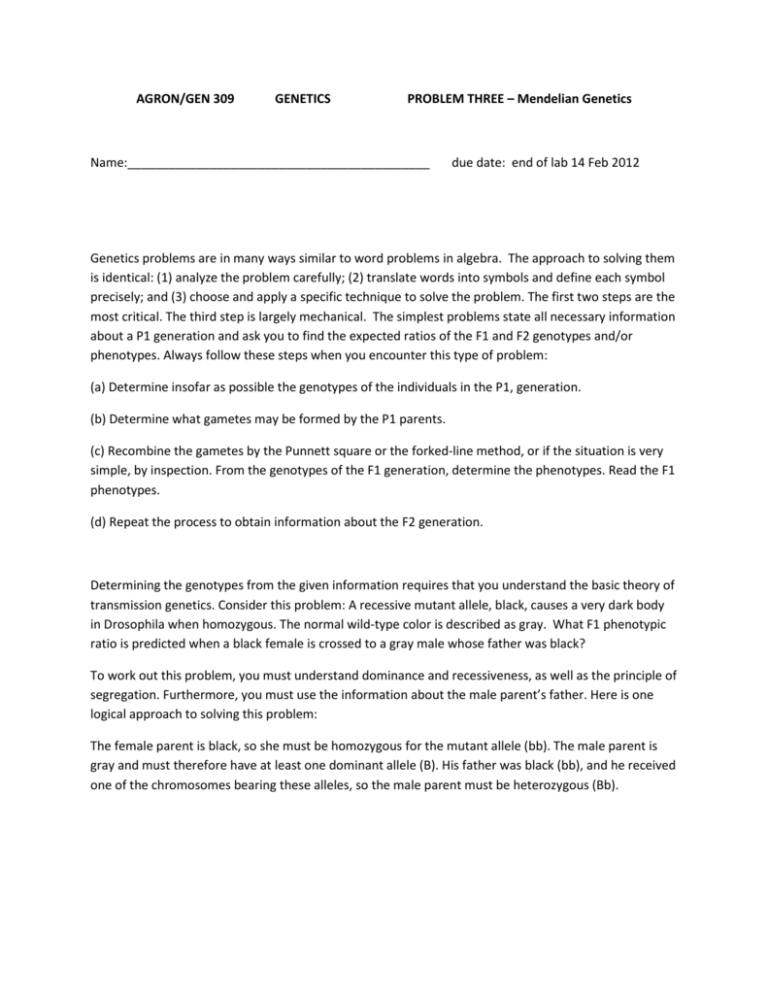
AGRON/GEN 309 GENETICS PROBLEM THREE – Mendelian Genetics Name:____________________________________________ due date: end of lab 14 Feb 2012 Genetics problems are in many ways similar to word problems in algebra. The approach to solving them is identical: (1) analyze the problem carefully; (2) translate words into symbols and define each symbol precisely; and (3) choose and apply a specific technique to solve the problem. The first two steps are the most critical. The third step is largely mechanical. The simplest problems state all necessary information about a P1 generation and ask you to find the expected ratios of the F1 and F2 genotypes and/or phenotypes. Always follow these steps when you encounter this type of problem: (a) Determine insofar as possible the genotypes of the individuals in the P1, generation. (b) Determine what gametes may be formed by the P1 parents. (c) Recombine the gametes by the Punnett square or the forked-line method, or if the situation is very simple, by inspection. From the genotypes of the F1 generation, determine the phenotypes. Read the F1 phenotypes. (d) Repeat the process to obtain information about the F2 generation. Determining the genotypes from the given information requires that you understand the basic theory of transmission genetics. Consider this problem: A recessive mutant allele, black, causes a very dark body in Drosophila when homozygous. The normal wild-type color is described as gray. What F1 phenotypic ratio is predicted when a black female is crossed to a gray male whose father was black? To work out this problem, you must understand dominance and recessiveness, as well as the principle of segregation. Furthermore, you must use the information about the male parent’s father. Here is one logical approach to solving this problem: The female parent is black, so she must be homozygous for the mutant allele (bb). The male parent is gray and must therefore have at least one dominant allele (B). His father was black (bb), and he received one of the chromosomes bearing these alleles, so the male parent must be heterozygous (Bb). From this point, solving the problem is simple: Apply the approach we just studied to the following problems. 1. ln a cross between a black and a white guinea pig, all members of the F1 generation are black. The F2 generation is made up of approximately 3/4 black and 1/4 white guinea pigs. (a) Diagram this cross, showing the genotypes and phenotypes. (b) What will the offspring be like if two F2 white guinea pigs are mated? (c) Two different matings were made between black members of the F2 generation, with the following results. Cross Offspring Cross 1 All black Cross 2 3/4 black, 1/4 white Diagram each of the crosses. 2. In Drosophila, gray body color is dominant to ebony body color, while long wings are dominant to vestigial wings. Assuming that the P1 individuals are homozygous, work the following crosses through the F2 generation, and determine the genotypic and phenotypic ratios for each generation. a. gray, long X ebony, vestigial b. gray, vestigial X ebony, long c. gray, long X gray, vestigial 3. The following are F2 results of two of Mendel’s monohybrid crosses. (a) full pods 882 constricted pods 299 (b) violet flowers 705 white flowers 224 For each cross, state a null hypothesis to be tested using X2 (Chi square) analyses. Calculate the X2 value and determine the p value for both. Interpret the p values. Can the deviation in each case be attributed to chance or not? Which of the two crosses shows a greater amount of deviation? 4. In a family of eight children, where both parents are heterozygous for albinism, what mathematical expression predicts the probability that six are normal and two are albinos?

